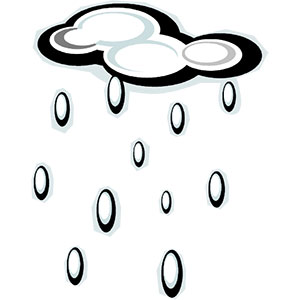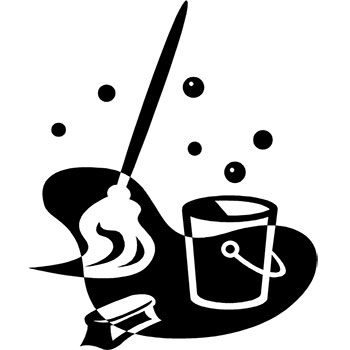***We compiled and updated our best advice on how to rescue your antiques and collectibles (including furniture, rugs and everything else) and are making it available to our readers as a free PDF download here.***
No one is ever adequately prepared for a major disaster like the devastating floods caused by Hurricane Harvey. Flood damage lasts a long time.
Flood damage to antiques and collectibles requires special immediate attention. Time is critical. Here are 10 tips from the Kovels to help answer the question, “What do I do first?”
1. Be sure your house is safe to re-enter. Do not walk into water until you are sure the power is off. Follow all safety rules and get permission to enter from the police, electric company or another professional. Write down the date and names of everyone who tells you what you can do.
2. Take photos or video of absolutely everything. Go into your home armed with your cell phone or a camera, pen, paper, flashlight, and plastic bags. Go through the house room by room and list, photograph or video the floor, window coverings, furniture, pictures, decorative items, photos—anything that you can see. Look in closets and open cabinets and drawers. Keep each room separate. Make notes on description and condition. Small items, like cups and saucers or napkin rings, should be carefully recorded, one at a time if possible.
To this listing you will later add actual cost, replacement cost, and any notes to prove ownership and value. It can be worth money in a settlement with the insurance company or on a claim of losses with the Internal Revenue Service.
3. Think like a thief. Call the insurance company. Get permission to remove the most valuable items in the house. This probably means all silver, jewelry, guns, coin collections, paintings, valuable rugs and other art and antiques, etc. You may have to wait until the insurance adjuster arrives.
What to save first? Rescue the things that are undamaged first, not the items that are soaked. Be sure to wear boots and rubber gloves, wash hands frequently, and cover open cuts so contaminated water doesn’t cause infections.
Write down everything you are taking out of the house. Put important papers in zip-lock bags and put them in a freezer.
Try to make sure the house is secure before leaving.
4. Mold is a priority. Dry everything as quickly as you can. If you take items to air out at the home of a friend, relative, or a storage locker write down where it is. With all that’s going on, you may forget!
5. Wipe wood dry ASAP. Wipe it and other hard surfaces with a rag soaked in a mixture of Borax and hot water. Remove drawers from wood furniture. Let them dry to reduce sticking and warping. Don’t dry wood in the sun. Check wood pieces for damage—warped or missing veneer or hardware. Save any bits and pieces and store them in a bag in a drawer so they can be part of the restoration.
Later, if the wood develops white spots or a film, rub the surface with a clean cloth soaked in a solution of half ammonia, half water.
If your wooden chair frame is valuable, save it. But sadly, you should remove and discard the upholstery. It can’t be disinfected or cleaned enough to avoid mold or diseases.
6. If your collectibles were in muddy water, just rinse off the dirt with clean running water, one piece at a time. Do not scrub. It will embed the dirt or scratch glass or ceramics. Dry with a soft cloth.
Dinner dishes and glassware must be disinfected. No matter how clean the dishes look, you must sanitize them if they were in or near flood waters. The easiest way is to wash them in a dishwasher. Don’t worry about the regular rules about never putting dishes with overglaze decoration and gilding in the dishwasher. One wash won’t do noticeable damage.
7. Shake silver-plated silverware with hollow handles, like those on knives and teapots, to see if there is water inside the handle. If you hear swishing, you need a professional restorer. If there is a wooden handle or other porous parts, clean the silver with hand sanitizer before polishing.
Sterling silver should also be sterilized. It can be put in almost-boiling water, a short cycle in the dishwasher without detergent, or cleaned with hand sanitizer.
8. Carpeting must be discarded. Oriental rugs can be saved but require a specialist. Throw rugs can be cleaned in a washing machine. Place plastic under furniture legs to prevent colors (or rust from metal legs) from bleeding from furniture to floor.
9. Save pieces of broken ceramic and glass items. You may repair them later or claim the loss. Put loose pieces in a plastic bag. Mark it with the identity and where you found it. Watch out for mold growth in the bag.
10. Wrap soaked books and paper in plastic and store them in a freezer until you can decide what you can restore. Books and paper may look wrinkled and free of mold if they had little water damage. But check carefully. Sometimes the inside of a book may still be damp or slightly moldy. Put them in a warm, dry place like a sunny window. After a day or two, take the paper outside and vacuum or brush away any mold with a soft-bristled brush.
Be sure to keep all bills connected with clean-up, restoration, and moving back. Many will be covered by homeowners, flood, or fine arts insurance. It will take time and a lot of effort, but keep a record of every letter, every visit and every call about the disaster. You may be asked for the same information several times.
Any more flood related tips? Please share your comments with our readers.





I have about 6 to 8,000 sports cards. had them stored in garage just long enough for remodel of a room in the house . I live in Houston & the flood got me before I could get all of them back in the house. Of course you can imagine what shape some of them are now (WET) is there a process for saving them. some are from the 60’s & 70’s. Any response at all are welcomed. Thanks- Anteekjim
THANK YOU from the Houston area. We are at varying stages in this flood: those in path of reservoir release are still underwater, but on the west side we are in recovery mode. Fortunately, my treasures are dry but I spent the last few days helping a friend who held 12 inches for over 24 hours. Her street is lined with sheet rock debris and disposed furniture. It’s heartbreaking.
Your article is valuable, there is confusion about what is “ruined” by flood waters or which items can be restored.
Advise we are given is any fabric / upholstery should be disposed.
Solid hard woods some agree can be saved. Please explain why it should not be dried in the sun.
We appreciate these helpful tips, I will print and pass along!
First of all, THANK YOU, Kovels!! What a great & thoughtful service you have provided with this article!
Second, r1938:
As an antique collector myself (and one who recently suffered a large loss to theft), I think this is anything BUT premature! People do care about their antiques, even in desperate times. Other things can be replaced: clothing, dishes, appliances,etc. But these precious belongings? Irreplaceable! And time is of the essence!
Thank you again, Kovels, for your timely and thoughtful advice.
I applaud your taking the time to make this information seen now. Most folks are focused on the epicenter of the flooding, but need to remember that there are edges to that devastation and not everyone will be hampered by water for months if not longer.
A friend of mine with family in Texas had water up to the front door step, it has receded now and that street, even the houses on the other side of the road that did flood in the first floor are drying out and trying to save what they can. Not everyone needs this to be sure, but I would rather have it to keep and be ready than to need it and not know what needs to be done.
Again, I say thank you for this.
Mold doesn’t spring up by immaculate conception. Spores exist in the air all the time and only grow when there’s a good spot. Don’t freak. They’re not the worst long term problem you face. The worst long term problem is dry rot. You can treat any affected products with Bonide or any other garden fungus preventative. It will destroy spores and prevent growth of mold or dry rot for around 7 years. That should get you well over the hump from any flood.
Take area rugs that are too large for washing in the machine outside, throw them over the fence and use a tank sprayer with oxy and water and a little laundry soap. Once they’re saturated, let them sit for an hour or so and rinse with the garden hose. Do it again until they’re pretty clean. Don’t forget to do it at least once from the back. If the top of your fence is sharp, use towels under it.
When they’re clean, drape them with one side hanging lower than the other and when that edge is dry adjust the carpet so that the other side is lower. You can also spread them on sawhorse, use your BBQ grill as a prop if it’s not rusty or get more creative to let them dry. If it rains, no worries. Just let it dry again.
If your goods are damaged by a city or government, they may tell you they will take care of everything. Most government agencies have self-insured insurance companies they own.They do not have to comply with government regulations in many cases. This can leave you with all the documentation and proof and still left with little in compensation. Make sure you notify your insurance company of all damages immediately as well as documenting loss for the government agency. Not to do so is a tragic error and can cost you almost all proper service and compensation.
I would add to this excellent advice that I believe watersoaked items, including buildings, should not be dried out with heat. Fans and air flow are good, but sun or heat will cause wood to warp.
Just a little premature for this kind of story. These folks could care less about their antiques when they are not sure where their next meal is coming from or where they will sleep tonight. Why not wait a few months to make this your lead?
THANK Y’ALL so much for these tips!!!! They are invaluable! I feel so much for the victims of this catastrophic mess, and feel blessed.
Unfortunately this info will not be available to the thousands that will need it. Please consider other ways to get it to their hands, its desperately important!!
These poor people are so overwhelmed, they will not be thinking straight, wont know what to do first; so please, please, get this info out there FAST!!!!
Many thanks and God bless you.